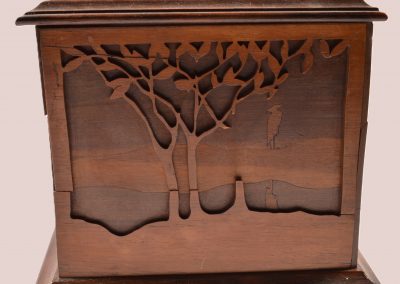Why can we find ‘memento mori’ symbols in and around Christian churches?

17th Century Wall Painting
All Saints’ Church, Salperton, Gloucestershire
What stands out to you about the painting?
Why do you think the skeleton is holding an arrow? Why might there be a scythe in the painting – what might it represent?
Do you think people would have found this painting frightening? How else might they have felt?
Does it surprise you that the painting is on a back wall, not a front wall? Why might this be?
Do you think the practice of reflecting on mortality is a positive one or a negative one? Why might some people find it helpful?
Why was visual imagery perhaps even more important in the 17th century than it is today? How else were people able to access important teachings? What alternatives do we have today?

Hands on History
The memento mori in All Saints’ Church, Salperton, can be seen by visitors to the church.
Museum Location
Explore more religious imagery




